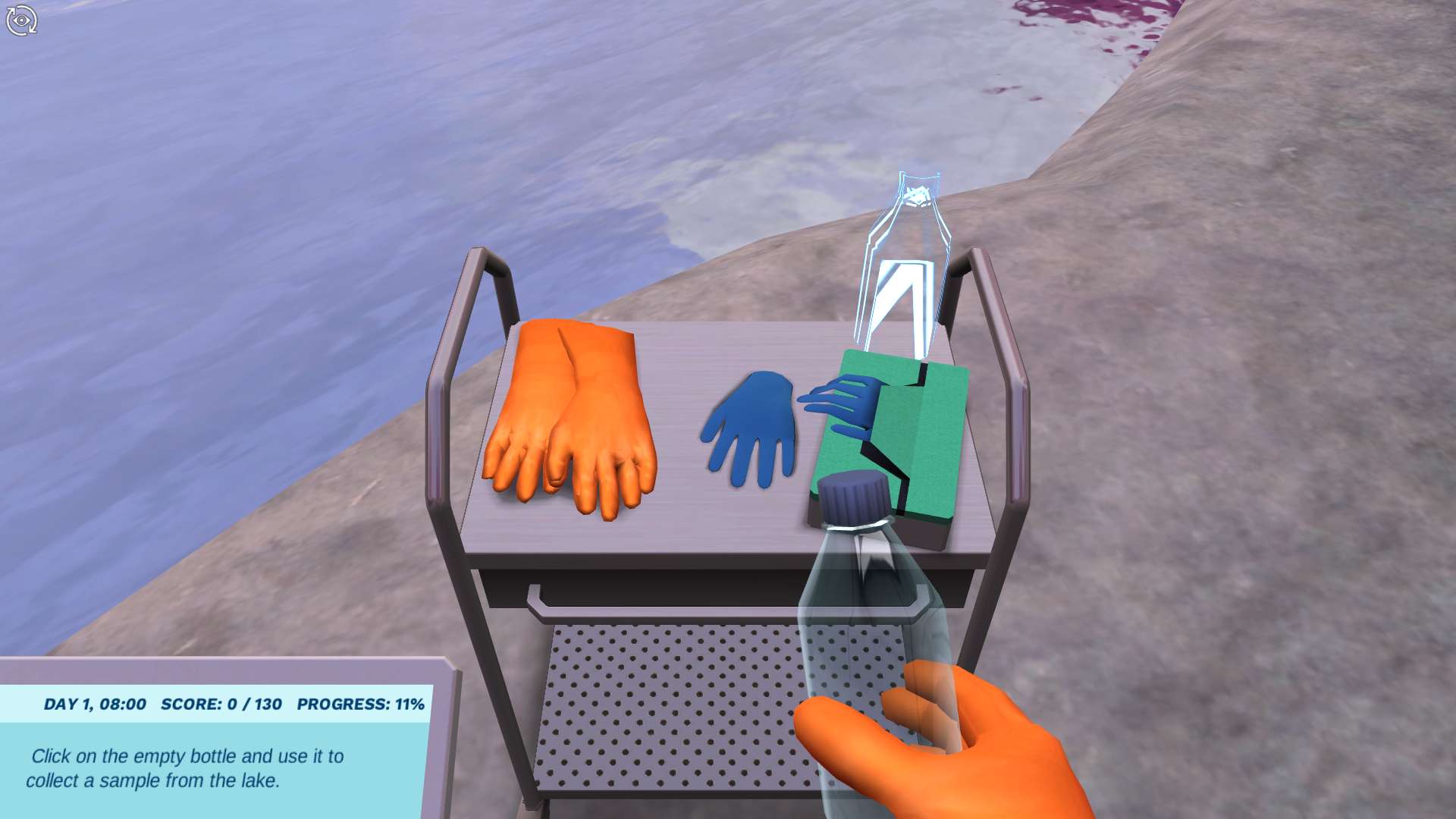Heading 1
Heading 2
Heading 3
Heading 4
Heading 5
Heading 6
Lorem ipsum dolor sit amet, consectetur adipiscing elit, sed do eiusmod tempor incididunt ut labore et dolore magna aliqua. Ut enim ad minim veniam, quis nostrud exercitation ullamco laboris nisi ut aliquip ex ea commodo consequat. Duis aute irure dolor in reprehenderit in voluptate velit esse cillum dolore eu fugiat nulla pariatur.
Block quote
Ordered list
- Item 1
- Item 2
- Item 3
Unordered list
- Item A
- Item B
- Item C
Bold text
Emphasis
Superscript
Subscript
About This Simulation
In a futuristic lab, you will get help from a robot assistant to determine the acidity of a lake of acid found on an exoplanet. You will learn how to quantify the acidity and alkalinity of substances.
Learning Objectives
- Understand that acids and bases can be found everywhere
- Understand the logarithmic nature of the pH scale
- Calculate the pH of a strong acid or base
About This Simulation
Lab Techniques
- pH meter
Related Standards
- HS-PS1-2, HS-PS1-5
- 4.8 Introduction to Acid-Base Reactions
- 8.2 pH and pOH of Strong Acids and Bases
- 8.1 Introduction to Acids and Bases
- 8.1 Theories of acids and bases
- 8.3 The pH scale
- 8.2 Properties of acids and bases
Learn More About This Simulation
This is the principles (high school) version of the simulation. For a more advanced version please see: “Acids and Bases”.
Watch out! You have discovered a lake on an exoplanet - but is it acidic or basic? You will surely know by the end of this one! You’ll have the chance to experiment with strong acids and bases to figure out how to reach a “neutral” pH.
If this simulation seems too “basic” for you, don’t worry as you’ll have the chance to deal with acids, too. In this simulation, you will learn about pH and pOH by mixing substances to reach a certain pH and sort various liquids by acidity.
What is the acidity of water?
Have Dr. One guide you as you learn the different definitions of acids and bases and gain hands-on experience experimenting with different solutions. Recreate the pH from skin lotions using only acids and bases and precision pouring techniques.
Return to the exoplanet
In the Acids and Bases (Principles) simulation, you are taken back to the exoplanet Astakos IV by accident. Here, you will collect a sample from a highly acidic lake. Your mission is to compare the sample with everyday solutions found at home, in the kitchen or in your classroom.
The pH of foods
You will briefly dive into the effects of eating certain foods. How will different acidic or basic foods affect your blood pH? And how do they compare in pH to other types of food?
For Science Programs Providing a Learning Advantage
Boost STEM Pass Rates
Boost Learning with Fun
75% of students show high engagement and improved grades with Labster
Discover Simulations That Match Your Syllabus
Easily bolster your learning objectives with relevant, interactive content
Place Students in the Shoes of Real Scientists
Practice a lab procedure or visualize theory through narrative-driven scenarios


FAQs
Find answers to frequently asked questions.
Heading 1
Heading 2
Heading 3
Heading 4
Heading 5
Heading 6
Lorem ipsum dolor sit amet, consectetur adipiscing elit, sed do eiusmod tempor incididunt ut labore et dolore magna aliqua. Ut enim ad minim veniam, quis nostrud exercitation ullamco laboris nisi ut aliquip ex ea commodo consequat. Duis aute irure dolor in reprehenderit in voluptate velit esse cillum dolore eu fugiat nulla pariatur.
Block quote
Ordered list
- Item 1
- Item 2
- Item 3
Unordered list
- Item A
- Item B
- Item C
Bold text
Emphasis
Superscript
Subscript
A Labster virtual lab is an interactive, multimedia assignment that students access right from their computers. Many Labster virtual labs prepare students for success in college by introducing foundational knowledge using multimedia visualizations that make it easier to understand complex concepts. Other Labster virtual labs prepare learners for careers in STEM labs by giving them realistic practice on lab techniques and procedures.
Labster’s virtual lab simulations are created by scientists and designed to maximize engagement and interactivity. Unlike watching a video or reading a textbook, Labster virtual labs are interactive. To make progress, students must think critically and solve a real-world problem. We believe that learning by doing makes STEM stick.
Yes, Labster is compatible with all major LMS (Learning Management Systems) including Blackboard, Canvas, D2L, Moodle, and many others. Students can access Labster like any other assignment. If your institution does not choose an LMS integration, students will log into Labster’s Course Manager once they have an account created. Your institution will decide which is the best access method.
Labster is available for purchase by instructors, faculty, and administrators at education institutions. Purchasing our starter package, Labster Explorer, can be done using a credit card if you are located in the USA, Canada, or Mexico. If you are outside of North America or are choosing a higher plan, please speak with a Labster sales representative. Compare plans.
Labster supports a wide range of STEM courses at the high school, college, and university level across fields in biology, chemistry, physics, and health sciences. You can identify topics for your courses by searching our Content Catalog.














